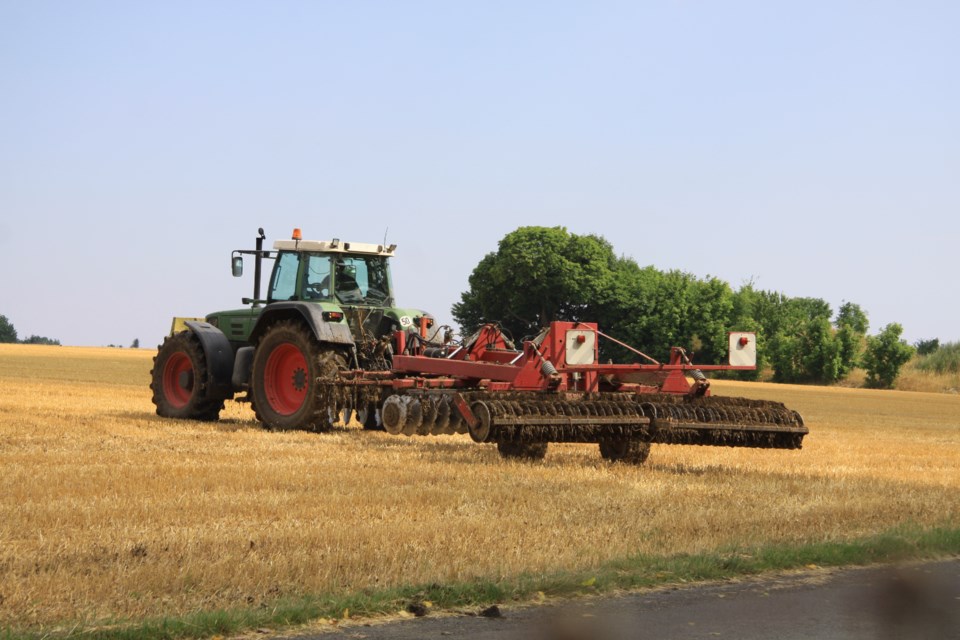A new project is aiming to create a database of available agricultural property in the Cochrane District in an effort to get more land back into production.
Dubbed the Private Agricultural Land Assembly Project, the two-year initiative is being spearheaded by the Northeast Community Network (NeCN), a regional, non-profit group focused on economic development, including agriculture.
NeCN includes representatives from Opasatika, Val Rita, Kapuskasing, Smooth Rock Falls, Cochrane, Iroquois Falls, Matheson, and Timmins.
After receiving $100,000 in funding from the Rural Economic Development (RED) program last fall, the project is just getting underway, said network chair Antoine Vézina, who also serves as the community development consultant for the Timmins Economic Development Corp.
Through the project, NeCN will contact private landowners who own prime agricultural land that’s not currently being farmed and encourage them to make it available for agricultural purposes, either through selling or renting to another producer.
The goal, Vézina said, is to open up more farmland in the area for use.
“We're excited for that, because, as economic developers, for the last four or five years, all that we've been hearing is a lot of people from southern Ontario, and even Western Canada, are very, very interested in coming here and making the move and starting agricultural operations,” Vézina said.
“But their main question is where's the land?”
Though NeCN has a general idea of what land is available, some owners are located outside the North, and it’s not known how open they are to divestiture.
Having a handy list for potential buyers or renters makes it easier for NeCN to know what’s available.
The project coincides nicely with the Ontario Ministry of Agriculture, Food and Rural Affairs’ (OMAFRA) livestock pilot project, which is working with Beef Farmers of Ontario to establish more working beef farms in the North, Vézina said.
The province estimates there is currently a deficit of 100,000 head of cattle in Ontario, and it’s compensating by importing a large portion of its beef from Western Canada.
A more attractive alternative – and what the pilot project hopes to achieve – is establishing more beef farms in the North so the product can be produced and consumed in Ontario.
Historically, there were plenty of beef farms located along the Highway 11 corridor, and soil conditions are favourable for forages and grass-fed livestock operations, Vézina noted, and that’s likely where the project will start.
After a list of properties is compiled, Vézina said NeCN will hold a series of information sessions to let owners know their options, which could include liquidation, leasing, or renting to buy.
“We’re pretty certain that a lot of these property owners do not know this information, so that capacity-building component will try and show them all the options and hopefully encourage them to maybe look at that and to implement it on their property,” he said.
NeCN will also look at parcels of Crown land to determine what opportunities may be there, although Vézina acknowledged the “the whole Crown land disposition process is a cumbersome one, a challenging one.”
NeCN would develop some guidelines to help landowners through the process.
Much of the interest in land spread across the Great Clay Belt comes from operators in southern Ontario and Western Canada who are being pushed out of the industry by high land prices.
At an average of $3,600 per acre, land in the North is more affordable for operators, Vézina said.
But large-scale farms typically require a minimum of 500 acres to get established, Vézina said, and land packages of that size are difficult to find in the Cochrane District unless an operator purchases a smaller parcel and then tries to expand by acquiring Crown land parcels around and adjacent to it.
Once available land is identified, Vézina said NeCN would likely establish a database, taking an active role in marketing those parcels to potential buyers.
Similar catalogues of agricultural land are currently available, and NeCN is in talks with some of the administrators to determine if they can work together toward a “one-stop shop” for producers.
“It’s not impossible to (find land) on your own, but we’re hoping to make it a lot easier for everyone with the information and results we’ll get from this project,” Vézina said.




